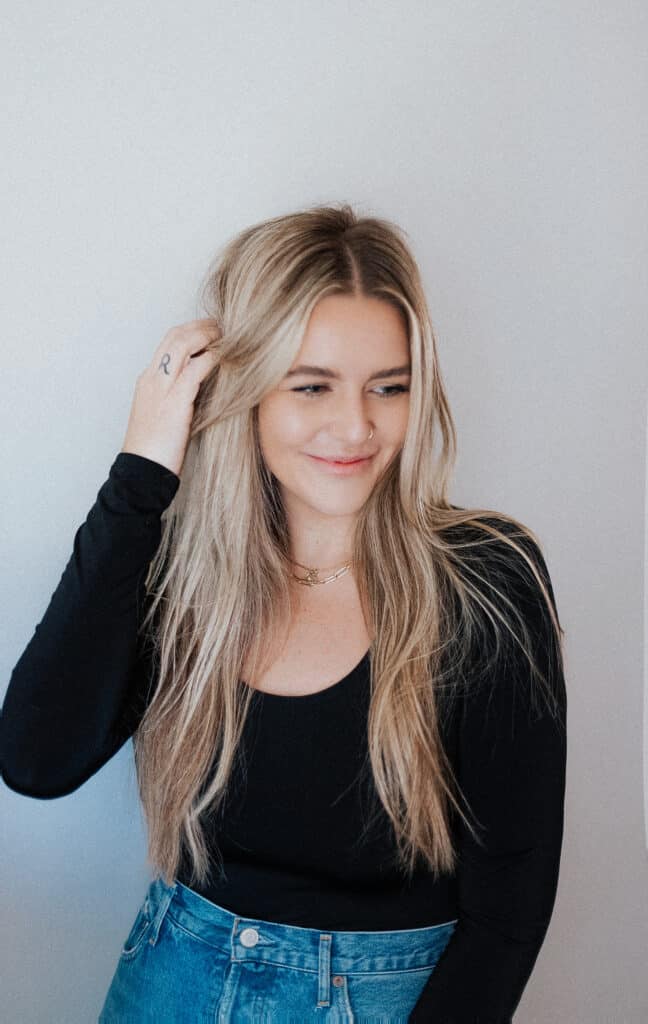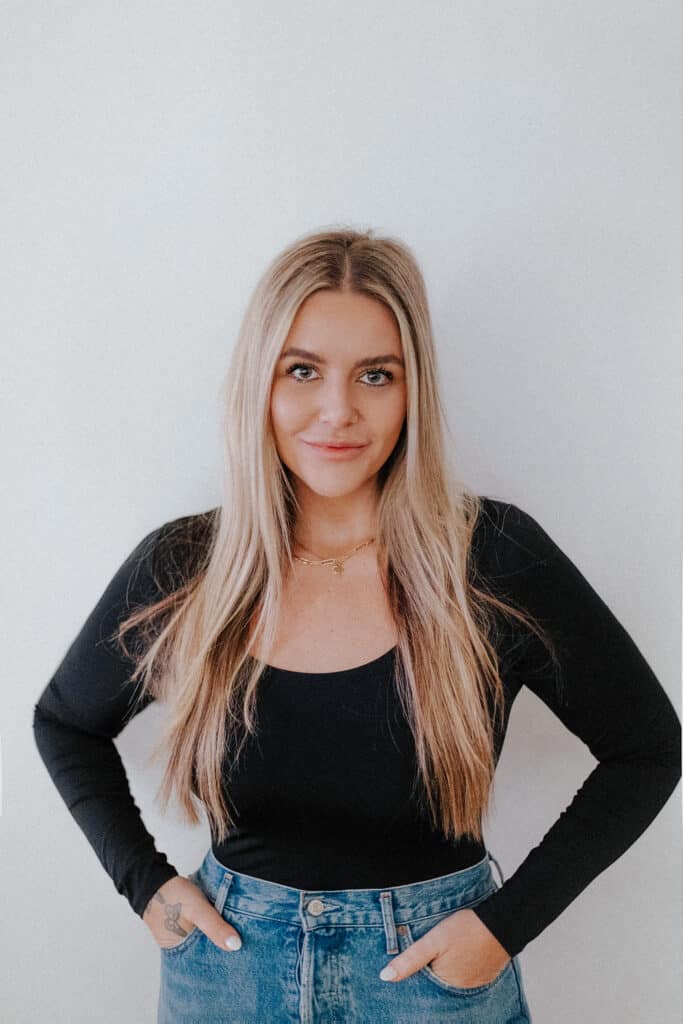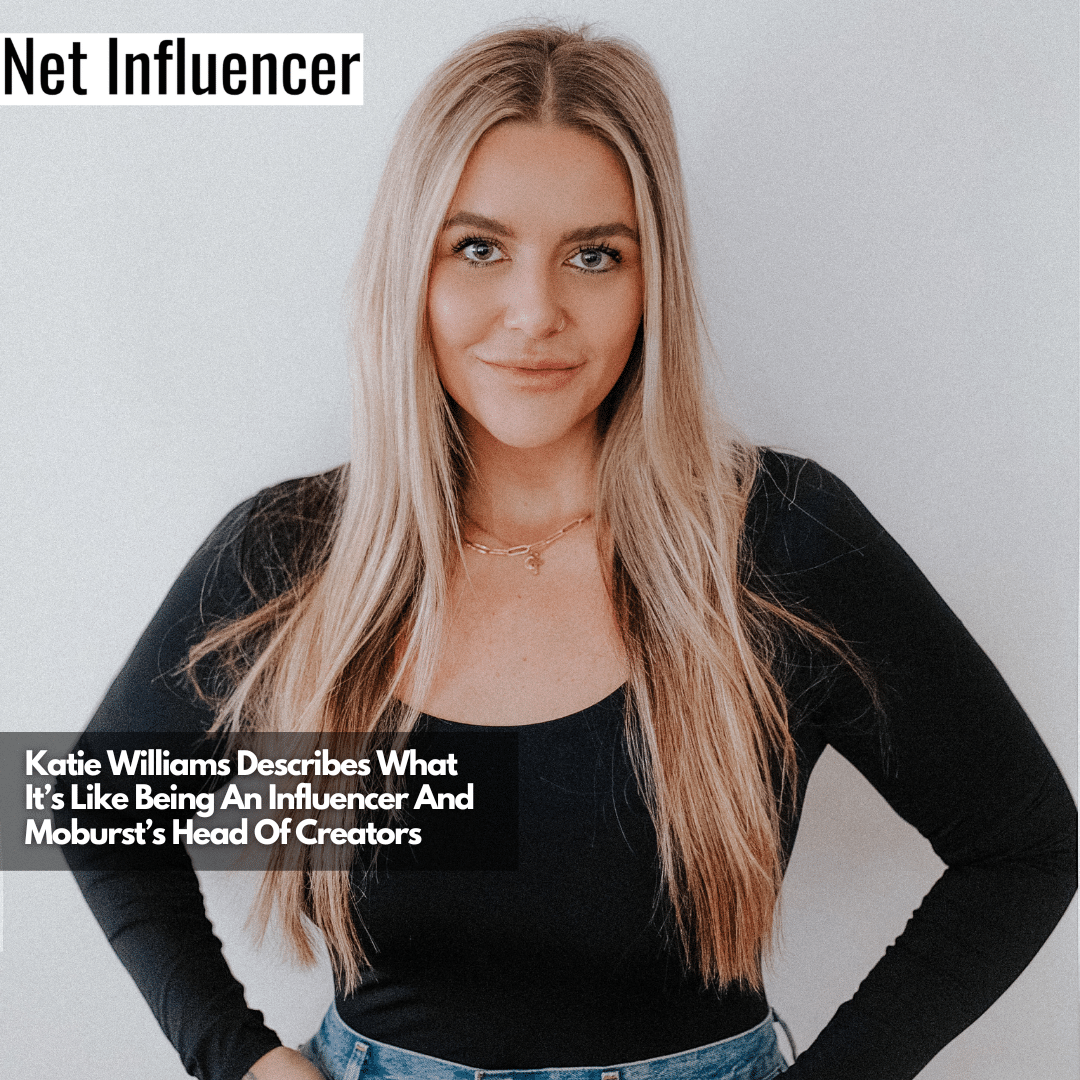Influencer
Katie Williams: Net Influencer Interviews Katie Williams
Katie Williams, the Head of Creators at Moburst Marketing Agency, started her journey as an influencer on Instagram, witnessing the platform’s early days and predicting trends like the rise of hashtags. Her passion for photography and understanding of the creative process has been instrumental in guiding creators to produce captivating visuals aligned with brand messaging.
Katie Williams began her journey in the online world as soon as Instagram was first created. She recalls being one of its first users as she signed up the moment the app launched.
She considers herself someone who is focused on “the next big thing” and stays up with the top trends. Back then, she even told her friends to use the pound sign and knew that it would become a thing — and it did, as hashtags on various social media platforms are more popular and useful than ever.
Katie sees herself as a pioneer in the industry. And with the growth of her follower base over the years, it sparked her curiosity about the mechanics of social media and the power of influence, which led her to explore the broader landscape and her education with her Masters of Business Administration program.
“My unique experience as an influencer allowed me to really develop my understanding of the creator economy. And I knew that I desired to just work deeper in the industry,” Katie adds.

You are also passionate about photography, as evident from your Instagram account, “orlandophotog.” Could you share how your love for photography started and how it plays a role in your career as a social strategist?
Katie’s passion for photography started during a family vacation back when she was still a teenager. She was handed a camera and was asked to help document the trip.
Although she started by using those disposable and bulky digital cameras, she found a sense of joy and fulfillment in capturing moments and telling stories through visuals. She always has a creative mindset and grew her career in social strategy, alongside photography, which was proven to be instrumental in creative aspects as she works with influencers and creators daily.
Katie’s love for photography allowed her to understand the creative process better, especially in the world of video. As a result, she’s able to guide creators in producing ideal, captivating visuals that align with the brand’s message.
Could you share more about your creative process? How do you decide what content to create and how to present it?
“My creative process really unites structure, brand voice, and the spontaneity that goes beyond that,” Katie shares. She begins with a concept, which is usually inspired by just about anything, from conversation and trends to color and location. Next, she visualizes the image and considers all the elements within lighting, composition, and mood.
Some of Katie’s best shots, not only in photography but also in content, come from unplanned moments — those organic and natural content.
During post-production, Katie will decide on the aesthetics based on the narrative that she wants to convey, as well as the story behind her creations.
Have your experiences in influencer marketing and creator economy informed your photography in any way, or vice versa? If so, could you share an example?
According to Katie, her experiences in influencer marketing and the creator economy impacted her love for photography and vice versa. The relationship between the two helped her understand audience preference, platform algorithms, engagement tactics, and more.
Besides helping with her photography by learning what specific types of photos to focus on, the two also influenced her aesthetic pleasing and nature of photography, which coincides with the creator economy and various social media platforms.
Katie explains further by telling us, “I started incorporating more people as an example of those elements into my shot because I noticed just along my decade of experience that those really just [add] human touch, that increases engagement.”
In addition, Katie’s photography experience contributed to her marketing career by emphasizing the importance of visual storytelling and conveying the brand’s message on her behalf.
When she started with Instagram, it was very pieced together, which looked and felt almost fake. Instagram and the creator economy have evolved so much, but she admits always wanting to have that emotional touch and to do more, tell more, and connect more.
What inspired you to specialize in influencer marketing and creator economy space?
Seeing the monumental shift in how brands connect with audiences was Katie’s inspiration for diving into influencer marketing and the creator economy space. Personally, traditional advertising wasn’t resonating with her in the same way.
She understands that traditional marketing has been successful in the past, and there will always be room for it in the future. But with the power of influencers and creators, brands have trusted her to create assets for them. Her main focus is always communication in an authentic way for the brand’s targeted audience.
Katie’s evolution in the creator economy space has been continuous and dynamic. The capabilities of the space continue to inspire her.
As an expert social strategist, what are the major changes you’ve seen in social media and influencer marketing over the years?
First, the platforms have been evolving, but Katie believes this is influenced by the rise of TikTok. There have also been major shifts nationally in Instagram and the birth of many other platforms, like Snapchat.
Second, content has become ever-changing, moving from the polished look of Instagram to having a very authentic and real approach. Third would be the recognition of the power of micro-influencers and creators who often have a smaller but more engaged audience.
There are also creators of user-generated content (UGC) who don’t have an audience at all but are able to connect with the content they create. This allows a brand to connect with its targeted audience.
Katie expects to see a more strategic approach to influencer marketing and the creator economy space but will personally focus on creating long-term relationships rather than one-off relationships.
Can you share a notable campaign you have led or any memorable partnership and what made it successful?
Katie led the creative assets for a major skincare brand and created several UGC pieces. They focused on creators who really have an innate ability to showcase the products in a calm yet engaging way, like the up-close shots of the product dripping down their cheeks as they wash their faces.
Since UGC isn’t meant to be production style, but to connect and engage in a super authentic way, being able to help creators come up with content that showcases transparency and reliable storytelling was memorable for Katie. This approach resonated so well with the viewers that they had a top 1% ad for click-throughs on TikTok days after launching.
How has the rise of short-form content (like TikTok, Instagram reels) affected your strategy in influencer marketing?
Katie has been able to adapt by focusing more on concise and engaged storytelling. “I think that with these platforms, it’s important to capture attention within the first few seconds,” Katie says.
The shift has allowed for more creativity, allowing creators and influencers to create impactful and memorable content in bite-sized formats, like little appetizers, as Katie would say.
How do you evaluate the effectiveness of an influencer marketing campaign?
For Katie, it’s important to evaluate all Key Performance Indicators or KPIs, which include engagement rate, reach impressions, click-through rates, and conversion rates.
Other softer measures they use are brand sentiment and the quality of the user-generated content. These are vital to assess the importance of the content.
As the Head of Creators, what is your approach to nurturing and supporting your team?
Katie is wholeheartedly rooted in empowerment, communication, and continual learning. She doesn’t only provide their creator network, resources, and tools necessary to succeed; she also loves to foster an open environment.
She’s always on Instagram, Meta, TikTok training, and anything she can get her hands on just to encourage ongoing learning. She’s also a believer in recognizing hard work. “I think it’s important in this industry to just boost morale and motivation,” Katie states.
What are some of the common misconceptions about influencer marketing that you’d like to clear up?
Katie wants to correct the notion that influencer marketing is all about reaching as many people as possible. She had clients and brands that primarily focused on the number of views their videos were getting. And while video views are important, it’s not the sole metric in measuring the success of influencer marketing — in reality, it’s about reaching the right people.
Videos can have millions of views, but if these viewers aren’t interested in buying any of the brand’s products, then the whole campaign isn’t useful and is only a waste of money. For Katie, engagement and content that fit the brand’s image and values are far more important than just the sheer number of views.
Another misconception most people have about influencer marketing is that it lacks credibility. Katie saw how some brands remained old school and how it took them time to maneuver and try new things. But as long as done right with the right influencer and the right managing team, Katie believes that any brand can benefit from influencers.

What are the top three challenges that brands face when it comes to influencer marketing, and how can they overcome these?
Katie sees maintaining a brand identity as a common challenge businesses face in terms of influencer marketing. Brands are concerned when they enter the creator economy and influencer marketing as they’re unsure of how those will affect their brand.
It’s crucial for creators to produce content that aligns with the brand. But there’s definitely a risk of diluting or misinterpreting the brand’s message or visual style from the creator’s perspective.
But mitigating this is easy — brands have to provide clear guidelines about their grand values, aesthetics, and messaging and give them to creators. “This is exactly what we do, and that’s why we’re here. It takes the necessity out of the brand that might not be creative-minded,” Katie adds.
Another challenge would be quality control, especially with UGC, as brands have less control over the quality of content produced. If brands just go out there and hire an influencer without giving any direction or help with the creative process, brands will not get what they want.
How do you see the future of influencer marketing and the creator economy evolving over the next few years?
“I don’t think it’s going to slow down,” Katie says. She believes the creator economy and influencer marketing, in general, will continue to evolve in ways that empower creators even more. She sees a few key trends on a day-to-day basis that is emerging, which she thinks will be very important, like the rise of micro-influencers in UGC content.
Katie also sees a shift towards authenticity and transparency of content. Finally, platforms continue to evolve with the model that the creators are sent and essentially pushing for. As a result, more and more creators are allowed to make a living using various ways, like subscriptions and many others.
Could you share a piece of advice for new creators who are looking to work with brands?
“Building those long-term relationships requires a lot of respect, understanding, and open communication for both parties,” Katie says. “At Moburst, I personally feel that one of our main goals is making sure that creators and brands alike feel valued and understood and involve them in the creative process.”
Some creators don’t understand the value that these brands are putting into them and the trust they’re initially getting. Maintaining clear communication and expectations will make for a beautiful partnership between any creator and brand.
What are some ethical considerations that brands and creators should take into account in influencer marketing?
Transparency is definitely one ethical consideration, as for Katie. In Moburst, they make sure their influencers always disclose the sponsored content to abide by the FTC guidelines, meaning maintaining trust with their audience and not fooling their audience.
Honesty is also critical, as well as respecting their audience’s privacy. “We try to maintain that and not to overuse any data tracking or invasive marketing techniques that would lead to mistrust by anybody,” Katie says.
Can you talk about how you’ve used data to drive decision-making in your influencer campaigns?
Moburst leverages data to identify which influencers and creators will align best with the brand. This means they’ll use data to look into influencers and creators based on the campaign and other factors, like audience demographics, interest levels, engagement rates, and location.
After the project, Moburst analyzes the data to measure the success using the predetermined KPIs, which include brand awareness, engagement, hard conversions, and many others. This doesn’t only help them evaluate the current campaign but also informs their strategies for future initiatives.
“I’m constantly paying attention to how things perform in the depths of it. That way, the next creative that we make is even better,” Katie adds.
How do you incorporate diversity and inclusion in your influencer marketing strategies?
Moburst places a high priority on diversity and inclusion. They strive to work with creators from various backgrounds, genders, ages, ethnicities, and orientations. They’re doing this not just to tick boxes but also to represent a wider range of experiences and voices in society to create more natural, relatable, and impactful campaigns.
Finally, what’s next for you and Moburst? Are any exciting plans or projects on the horizon that you can share with us?
Moburst is continuing to expand its creator network and wants to create a community of like-minded creators who want to create wonderful and beautiful pieces of content for brands. If you are a creator and would like to be one of the first to know about Moburst’s upcoming campaign opportunities, get in touch with Katie. They’re working closely with TikTok and other platforms on many great projects and are excited to see what the future brings to the agency.





















